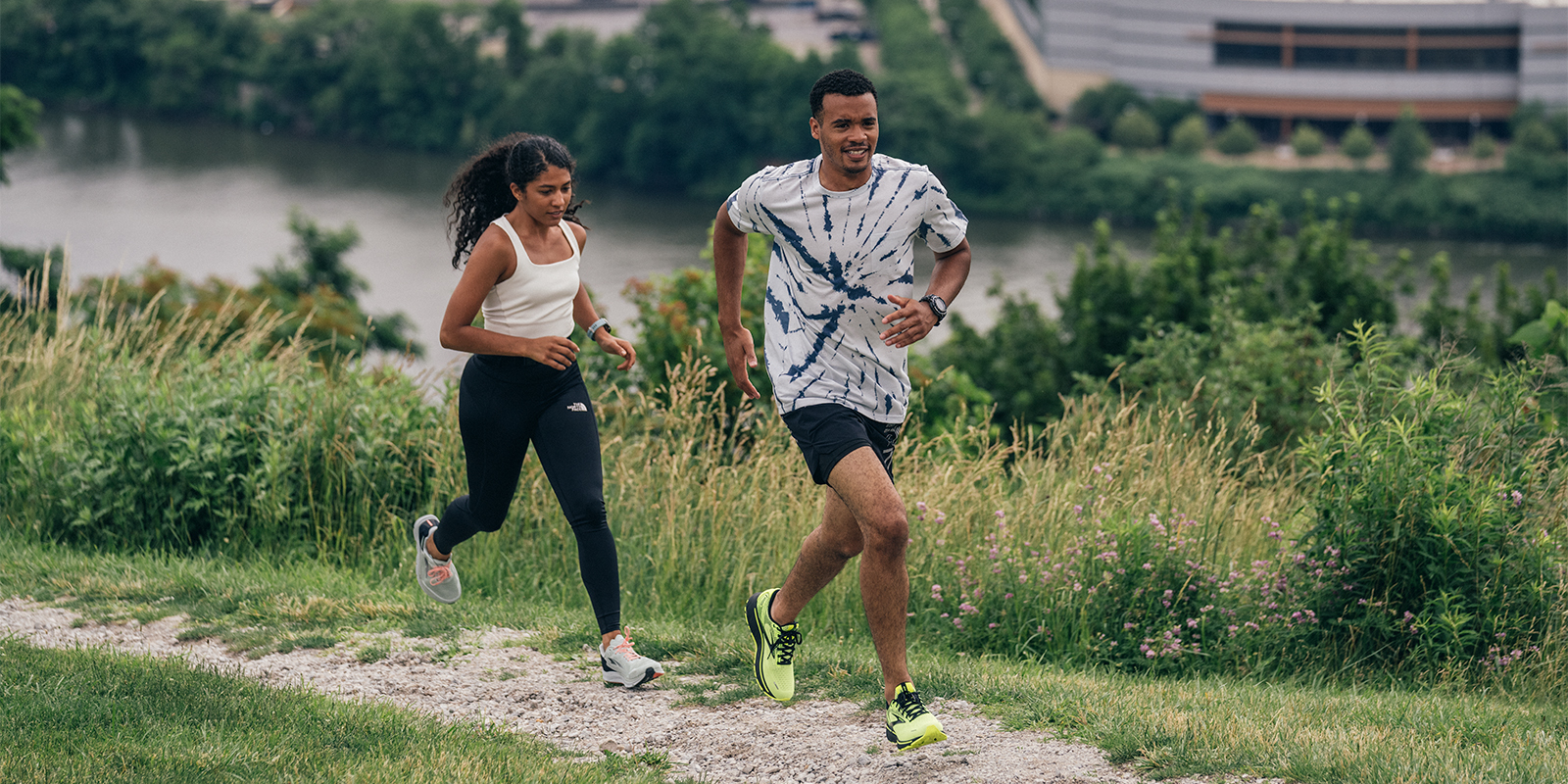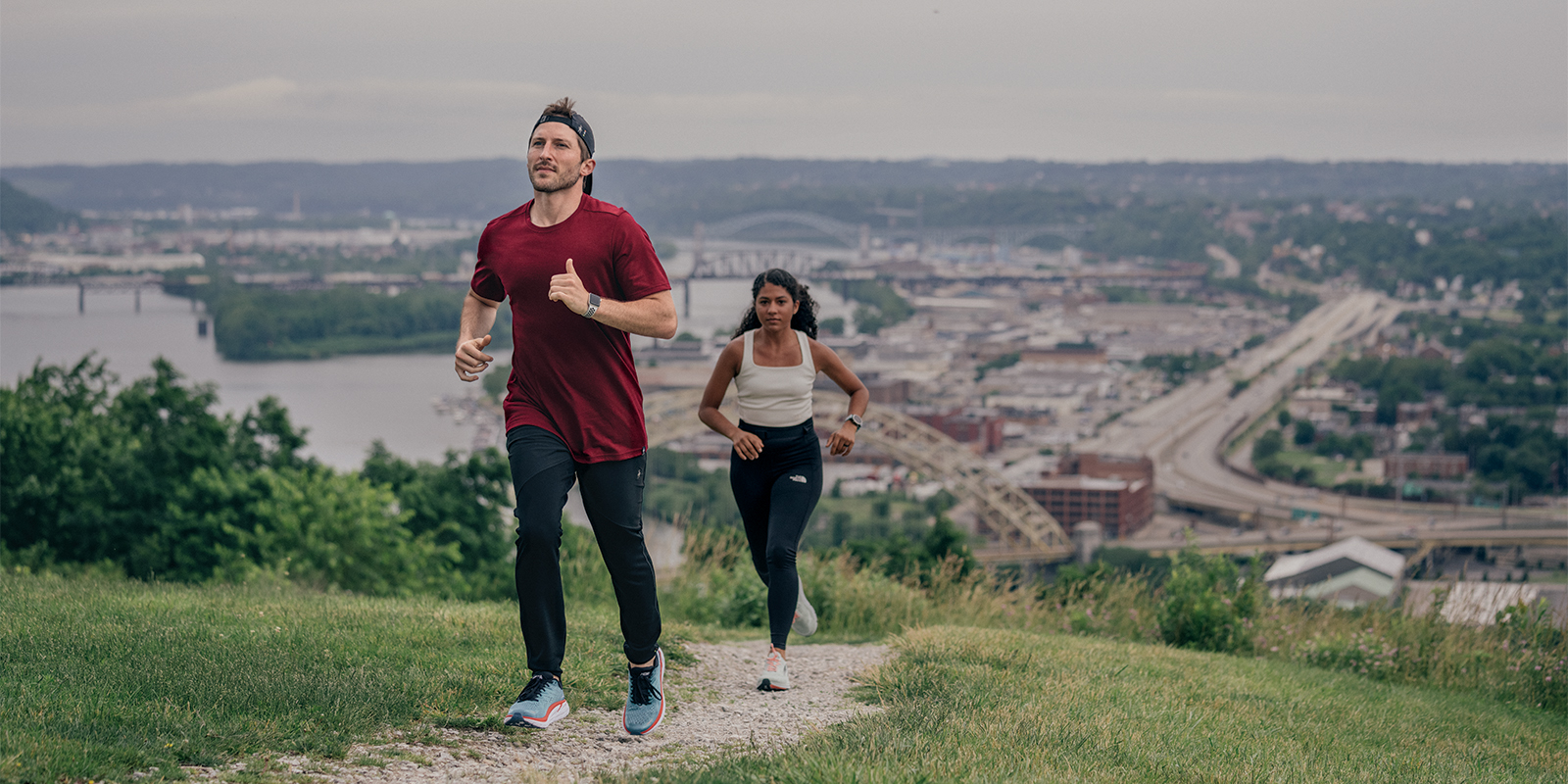If you think running is freedom, wait until you experience the liberation of using a good running pack or vest. When fully loaded—with water, fuel, first-aid essentials, maybe a jacket, beanie, or gloves—you become self-sufficient and ready for anything.
So how do you zero-in on the right setup for you? First, let’s look at the difference between a running pack and running vest.
Running Pack
Unlike conventional backpacks with waistbelts, running packs generally have just a thin, adjustable strap across your sternum. Some running packs also have a strap that attaches lower on your chest. This design minimizes restriction and bounce.
Running packs have pockets on the front of the shoulder straps, and on straps that wrap around the sides, if the pack has them, that allow you to stash and access items like fuel, your phone, and lip balm mid-run. Weightier stuff, like water and additional clothing, is carried in a larger panel that sits on your back. Fluids are generally carried in a hydration bladder, though there are some running packs that have large pockets on the shoulder straps that can hold soft hydration flasks.
Running Vest
Running vests are constructed to fit, well, like vests. They attach to your body via small, thin cords that connect two swaths of material that are wider than traditional running pack straps. That material is made out of thin, breathable, quick-drying mesh which should lay comfortably against your body.
Those front panels also have multiple pockets layered on top of each other, intended for soft flasks to hold your fluids, your fuel, phone, and other needs. Some soft flasks come with straws, meant to allow easy drinking without taking the flask out of the pocket or having to bend your head down too far.
The larger back panel of a running vest gives you the option to carry a hydration bladder and bulkier items like a jacket.





